mindanao / philippines / southeast asiaicon: libulan, borgy angelescover: t’boli people on lake sebu, bruno barbey
Don't wanna be here? Send us removal request.
Text






This is solid proof that the common excuse, "Rape is inevitable in times of conflict," is simply not true. See, in Bontok versus Bontok warfare, they will not even dare raise the skirts of the women. This is why in their wars, there was never a single case of rape.
Walang Rape sa Bontok (2014) dir. Leste Valle
27 notes
·
View notes
Text
just saw a relative post a dead body of another relative after he passed away. what the fuck are filipinos doing on facebook.
we need the same privacy laws in the philippines as the ones in japan. why are people posting videos and pictures of corpses post-suicide on facebook? i saw an ofw on tiktok who got sacked from her delivery job because she would publish videos of people’s homes in public. buangon man kaayog style.
5 notes
·
View notes
Text
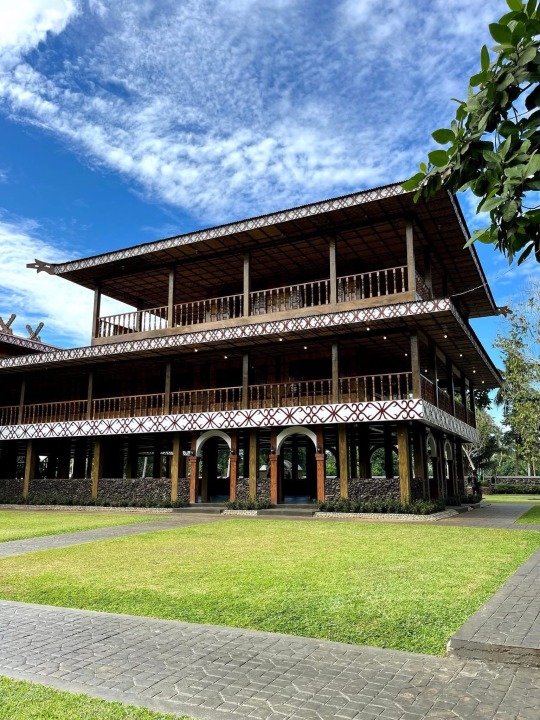
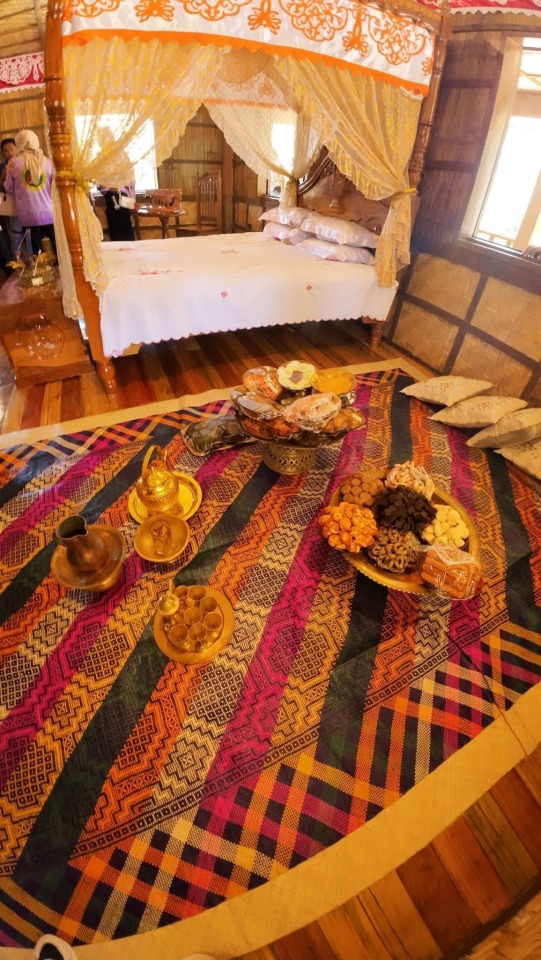
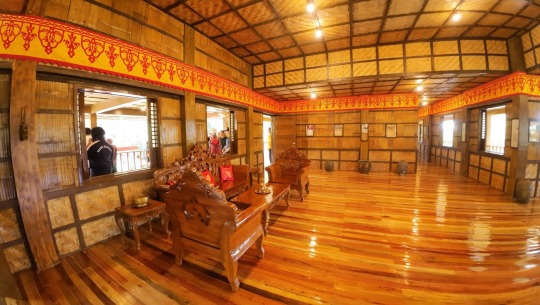
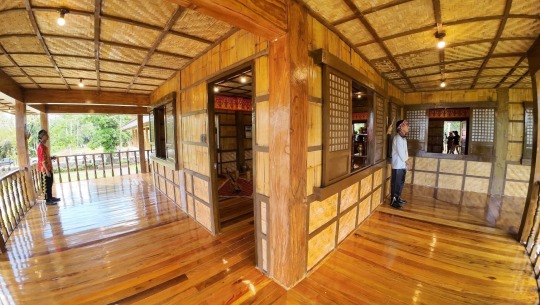
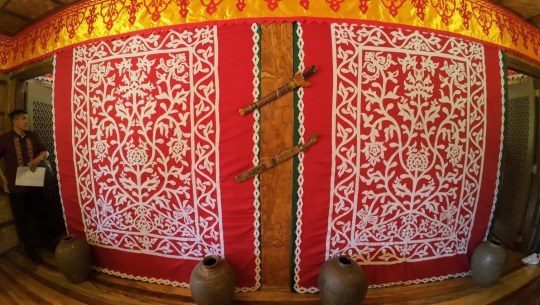
Astanah Darul Jambangan, Maimbung, Sulu.
4 notes
·
View notes
Text
we need the same privacy laws in the philippines as the ones in japan. why are people posting videos and pictures of corpses post-suicide on facebook? i saw an ofw on tiktok who got sacked from her delivery job because she would publish videos of people’s homes in public. buangon man kaayog style.
5 notes
·
View notes
Text
the filipino public is so damn scared of activists and the communist boogeyman that they have to ruin everything for everyone else too
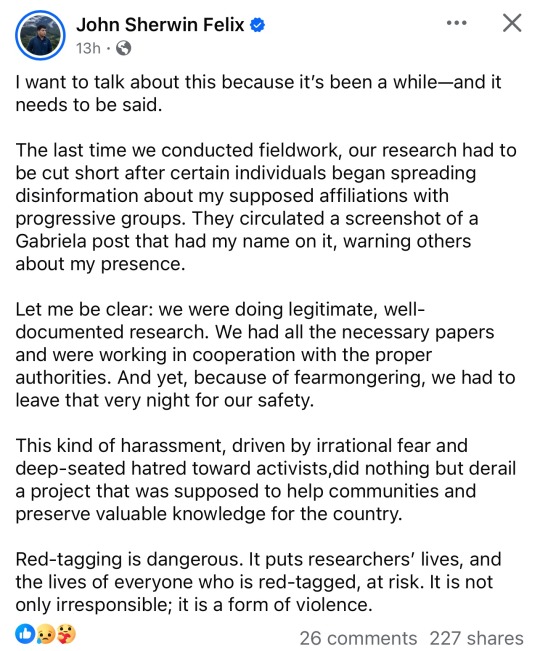
4 notes
·
View notes
Text
I had only ever seen [my grandmother] in Sablay, our traditional Tausug blouse. Whether at home or at social events, she wore it in different variations, breathable fabrics for daily wear and more elaborate, embroidered ones for special occasions. As a child, I thought it was outdated, even inconvenient.
Then, at roughly 11 years old, I asked her in Tausug, “Apuh Inah, mayta kaw nagsasablay hadja? [Why do you always wear the Sablay?]”
She gave me a simple yet consequential answer: “Sablay kasi in badju ta.”
“Sablay is our identity.”
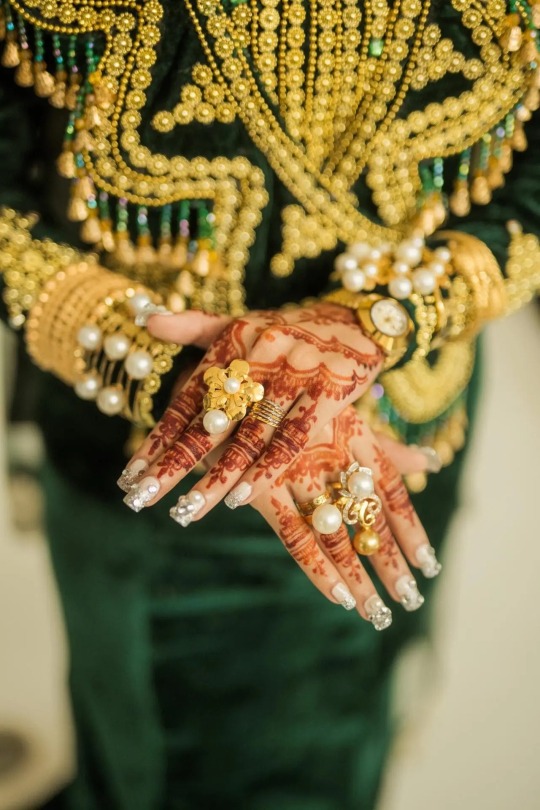
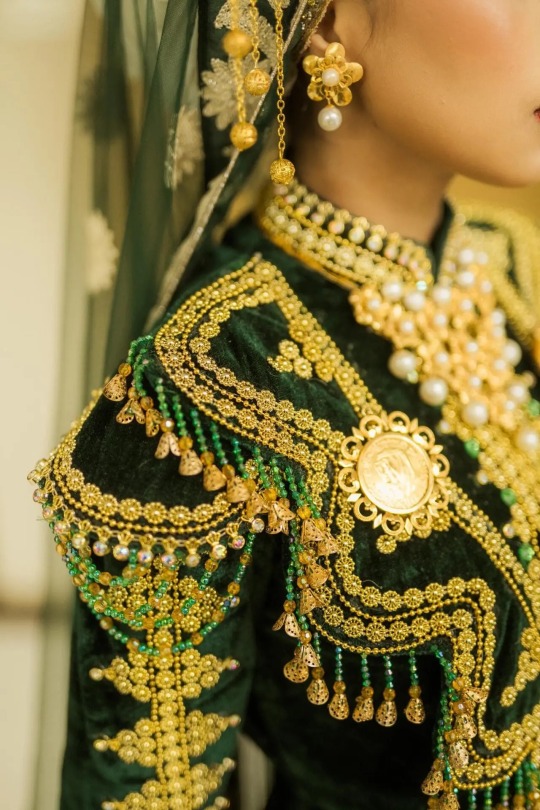
2 notes
·
View notes
Text
When he has a big order these days for baur (baul or hand carved wooden chest with elaborate Okir motifs and inlaid with tipay or polished shells), master woodcarver Lantong Pangcoga says it has become difficult to find anyone to work at his workshop in Tugaya town, Lanao del Sur.
“I have to look everywhere for someone to work in my shop,” Pangcoga told MindaNews, explaining that the young artisans in his town now prefer to work in shops selling mobile phone gadgets in Marawi City.
Okir is characterized by intricate geometric and flowing designs often seen in Meranaw art forms such as architecture, woodcarving, weaving, brasswork. It is also commonly used to design mosques, houses, furniture, and traditional Meranaw clothing such as malong.
The 5th class munipality of Tugaya, is considered Ground Zero of Meranaw culture and the arts. There are workshops in almost every house making gongs, drums, chests and tapestries.
It also the center of brass making for trays, beads as well as malongs with intricate okir designs.
Rosslaini Alonto-Sinarimbo, Director General of the Bangsamoro Autonomous Region in Muslim Mindanao’s Ministry of Trade, Investments and Tourism (MTIT) said they are fully aware of the diminishing interest of the youth to learn the Okir and other forms of Meranaw art, citing the internet and pop art as their greatest threat.
“This is the reason why we are constantly looking for platforms to display our arts and culture,” she said.

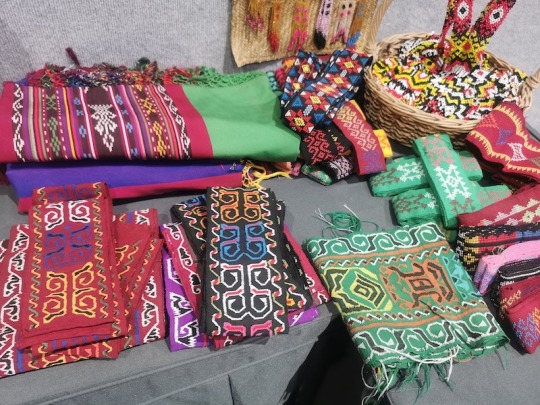
1 note
·
View note
Text
METRO MANILA—The Bangsamoro region’s parade float in the 127th Independence Day on June 12 highlighted the Maranao warriors’ great contribution to the success of the Katipuneros against Spanish colonizers, resulting in Philippine independence.
It featured the 1895 Battle of Marawi, a historical event in the region that showed the valor of Maranao combat heroes, who resisted the Spanish colonization in the late 19th century.
Ruhollah Hussein Alonto, a Bangsamoro researcher, shared that the 1895 Battle of Marawi paved the way to empowering the Kataastaasang Kagalanggalangang Katipunan (KKK)—the Philippine revolutionary group that started the independence riots against the Spaniards—to structure themselves and strengthen their forces against the invaders.
“Because Ramón Blanco was mobilizing 5,000 Spanish forces, all the resources of the Spanish colonial government were focused here in Mindanao. The Katipuneros were given the opportunity to organize,” Alonto said Wednesday in an interview on Kapihan sa Manila Bay with Marichu Villanueva.
“From the lens of Philippine historiography, we can see here the convergence of Bangsamoro history and Philippine history—the same quest for independence,” he added.
2 notes
·
View notes
Text
trump elon having their uniteam moment
4 notes
·
View notes
Text
filipinos online always cry about vietnam, a communist country, surpassing the philippines. like duh? ASEAN is ASEAN but the conditions in the philippines, even for middle class people, are just too much. filipinos would rather tour outside the country because it’s that inconvenient in the philippines.
3 notes
·
View notes
Text
Want to know what casual racism in Mexico looks like? It’s pretty simple. When my Mexican friends met my ex-husband, they all said the same thing: “I could not believe that was your husband.” It’s a confession that never comes until after at least a year of friendship. And it only comes from Mexicans. The reason? My ex-husband is very dark-skinned. And for most Mexicans to consider you good-looking if you’re very dark-skinned, you need some other redeeming qualities. A supermodel’s body, perhaps, or piercing green eyes. The visual trappings of wealth are also an immense help, as they are anywhere. To me, of course, he was very good-looking. And I wasn’t alone in my opinion. When we traveled to the States, my U.S. friends would pull me aside: “Wow, he’s cute!” Finally, some people who understood. They saw what I saw! When I was talking to some women a few weeks ago for my article on reluctant immigrants, this was a theme that came up among those who’d “returned” to Mexico with their husbands. Many were repeatedly faced with confused questions about why on earth they were willing to come. An incredulous “¿A poco te gustan los morenos?” (So you really like brown guys?) was a common question. Um. Yes? And also, what is wrong with you?
continue reading
1 note
·
View note
Text
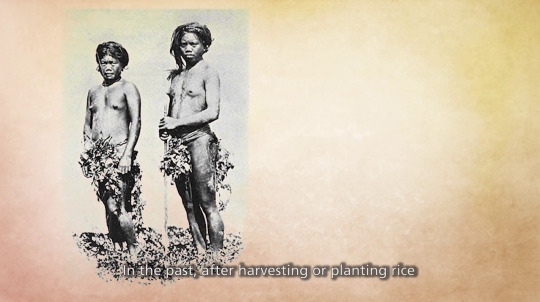

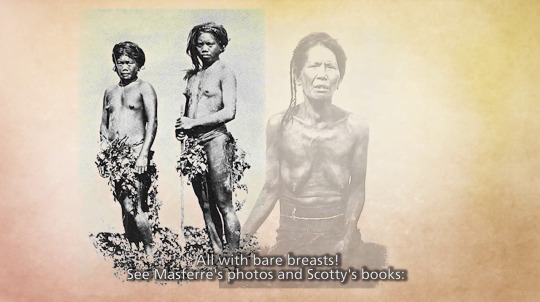

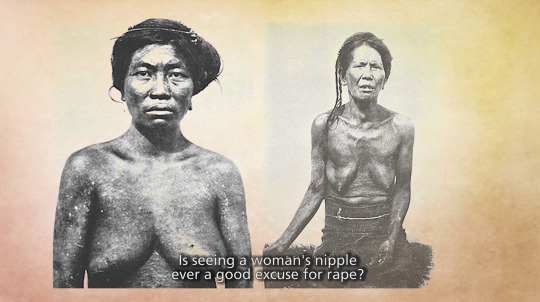


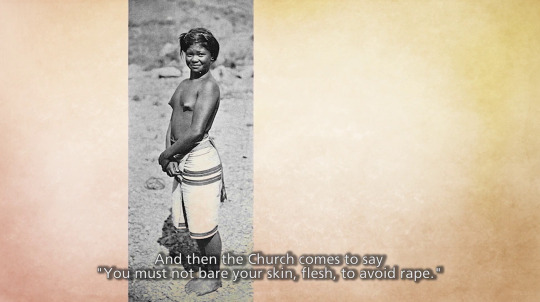
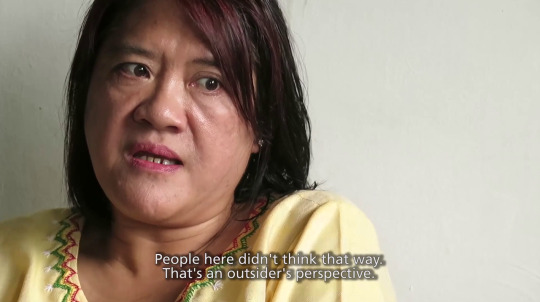
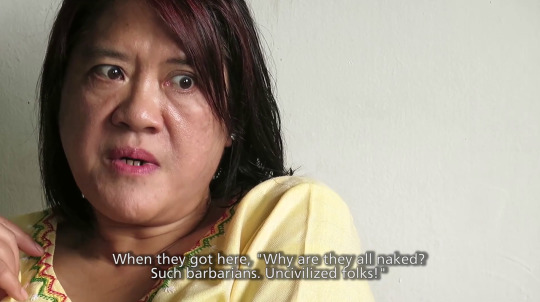
Walang rape sa Bontok (2014)
direksyon ni Lester Valle
62 notes
·
View notes
Text
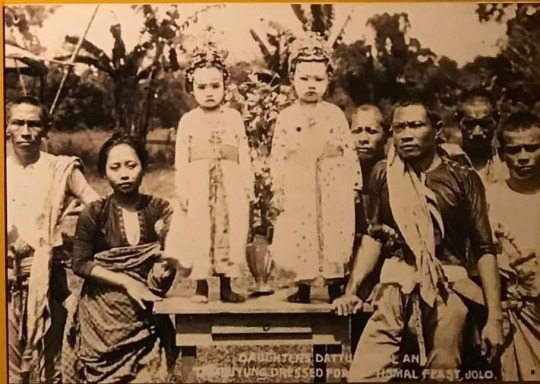
The Sulu Tawi-Tawi Cultural and Historical Society:
Undated photo of two daughters of Sulu Datus for their Pag Sunnat that the photographer identified as Baptism Ceremony in Jolo, Sulu.
These two dayang-dayang, daughters of Datus are properly made up in the traditional burak, with their hair adorned with kalajugjug, for their Aqeeqah/ or PagSunnat ceremony.
In the photo, we can decipher they are daughters of Datu Jainal (?) and Datu Uyung. Having shown this photo to Dayang Dayang Putli Carolina Julkarnain, a true blue royalty from Patikul, she said it must be that of young Dayang Dayang Putli Andrada, daughter of Datu Uyung.
9 notes
·
View notes
Text
During marine sand extraction for land reclamation near Surabaya, over 6,000 vertebrate fossils were dredged up from what turned out to be a buried river valley—a Pleistocene lowstand of the Solo River, now submerged under the Java Sea. Among these were two Homo erectus skull fragments, marking the first hominin fossil discovery from the drowned plains of Sundaland.
For those less familiar: Sundaland was a vast continental shelf that, during glacial periods when sea levels dropped, connected today’s islands of Java, Sumatra, and Borneo to mainland Asia. It was a savannah-like environment, rich in biodiversity and, as this find affirms, a vital corridor for hominin movement and survival.
What makes this discovery so compelling isn’t just its novelty—it’s the context. Dated to roughly 140,000 years ago, the fossils align with the Solo River terrace sites like Ngandong and Trinil, previously considered the last redoubts of a long-isolated Homo erectus population. But this seabed site shifts the narrative. It suggests that Homo erectus wasn’t marooned on Java after all—they moved with the rivers, adapted to changing climates, and perhaps even interacted with other hominin species across the broader region.
2 notes
·
View notes
Text
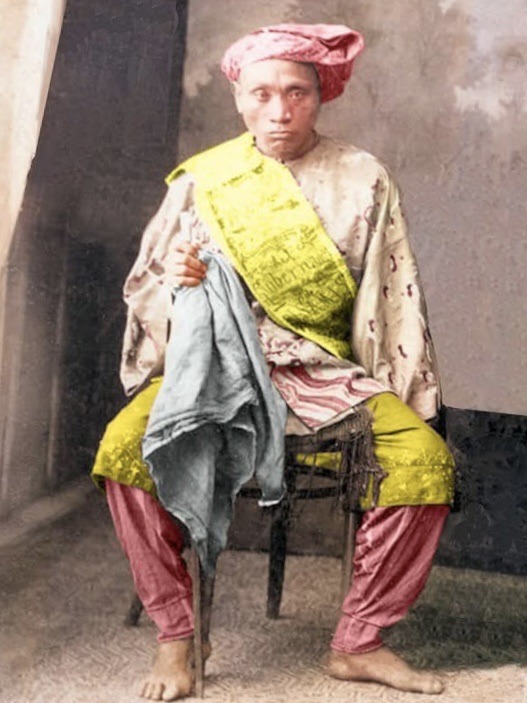

LAMENTING THE DISAPPEARANCE of using the iconic authentic headbands of the Maranaos. It must be a sign of the cultural time. My mother's father, Lantod Hamdag, the Sultan of Bayang and commander of 400-600 Maranao warriors, achieved martyrdom in the May 2-3, 1902, Battle of Bayang against the illegal invasion of the Maranao homeland in Mindanao Island.
— Usopay Hamdag Cadar, May 2023
17 notes
·
View notes


